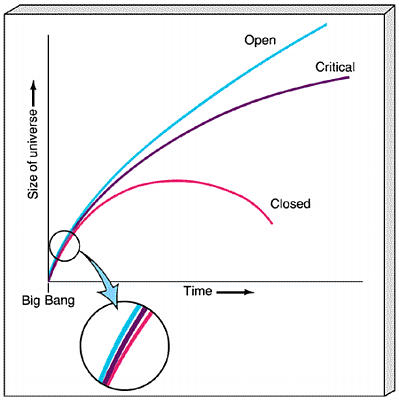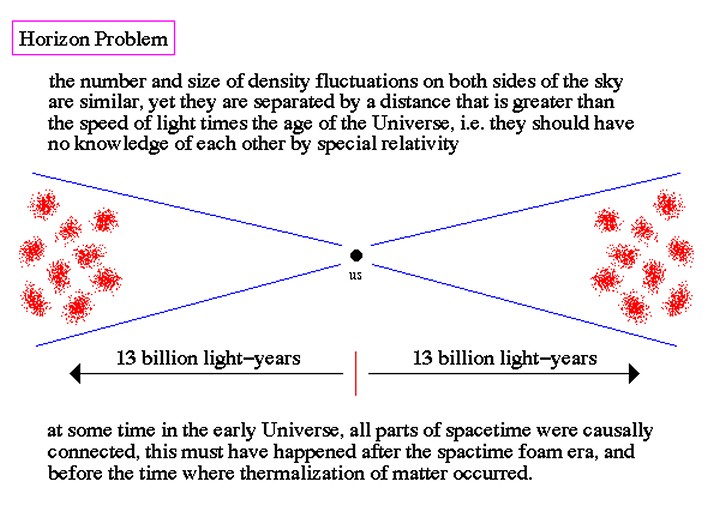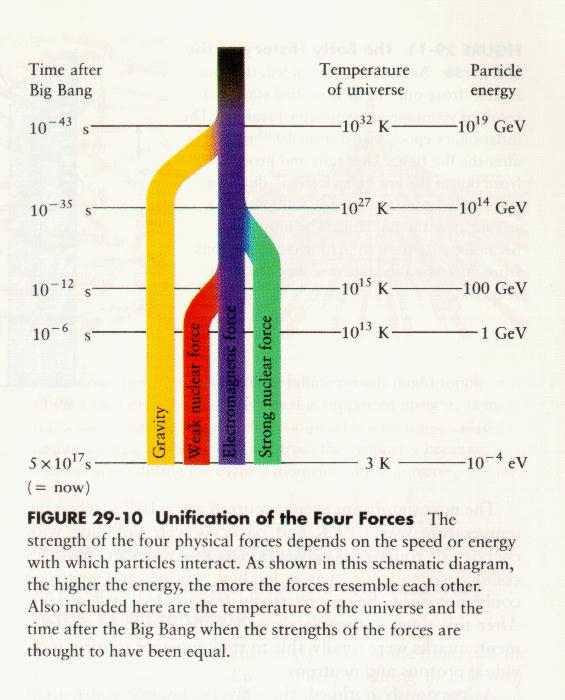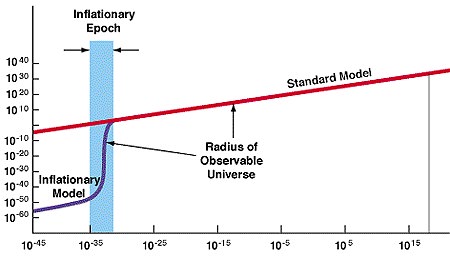 |
Flatness ProblemThe Universe has total Ω ~ 1 or perhaps exactly 1 Is this a problem? Yes. To understand this point, note that Ω = 1 is special in that the radiation, matter, and dark energy of the Universe conspire to make the Universe precisely flat. If there was a slight imbalance in the begining, we would have problems. To understand this, consider the following. Analogy: Try and balance a pencil on its pointed end. If you are far from vertical, the pencil falls to the ground very quickly. The closer you can place the pencil to vertical the longer it stands-up before it falls over. If you could place it at precisely vertical then (classically) it could stand-up forever. It is hard to place the pencil at its critcal position. Universe: If the Universe started off far from critical, then it would have either quickly collapsed (not lasted for 13.7 billion years) or it would have expanded so quickly that it would have passed through the nucleosynthesis and galaxy formation epochs so fast that we would not be here. The only way for the Universe to have lasted this long and to have passed through the nucleosynthesis era at leisurely enough rates requires that the Universe started off very close to critical. How close?
Amazingly,
to make Ω(t) ~ 1 today.
This is Flatness Problem |





